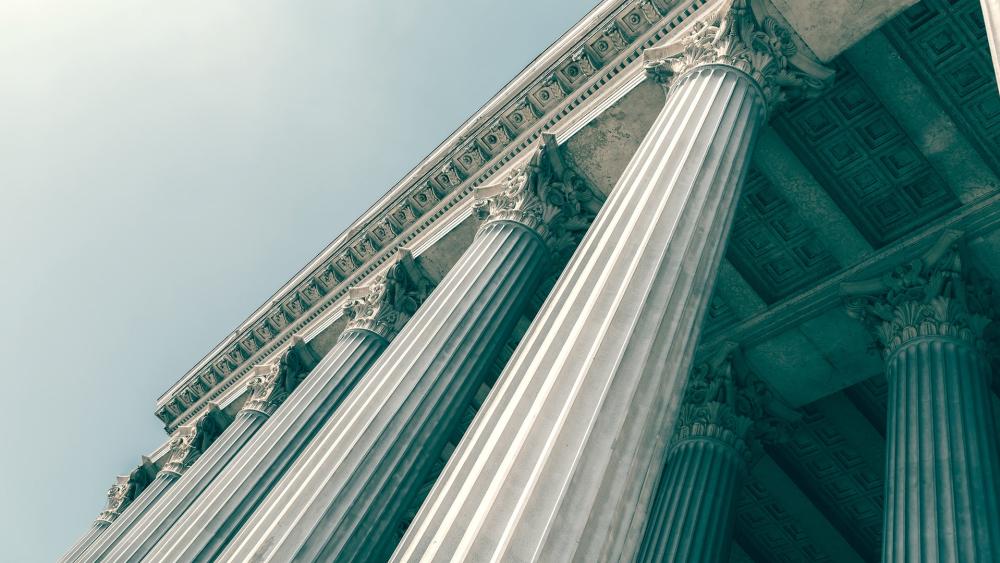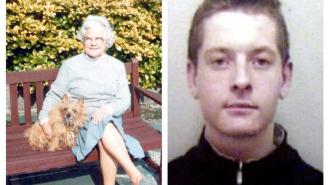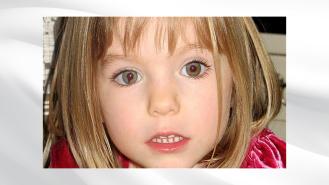
The trial of Louise Woodward: What really happened to baby Matthew?
In 1997, the world was gripped by a sensational murder trial taking place in Boston, Massachusetts. British au pair, Louise Woodward, had been accused of violently shaking eight-month-old, Matthew Eappen, and causing his death. The evidence presented at trial would paint two very polarising portraits of Woodward and even today, the public opinion on her guilt still remains very much divided.
It was 4th February when 19-year-old Louise Woodward called 911 to report that the eight-month-old boy she was caring for, Matthew Eappen, had stopped breathing in his crib. Woodward, who was originally from the village of Elton, Cheshire, had moved to Boston after being sponsored by the EF Au Pair of Cambridge. She met all of their qualifications and had four days of training before flying out and working for Matthew’s parents, Sunil and Deborah Eappen (Boston Herald, 8 February, 1997 – ‘Neighbors at Home Say Nanny Good with Kids’).
Matthew would be rushed to Boston’s Children’s Hospital with a bleed on the brain which was allegedly consistent with shaken-baby syndrome. Woodward would be charged with assault and battery charges after she was accused of causing massive brain damage to Matthew. According to prosecutors, Woodward had admitted to shaking Matthew because he was "fussy"
During the three-week trial, the prosecution would put forward their theory that Woodward had violently shaken Matthew before slamming his head against some kind of flat, hard surface, causing a fatal injury. The defence, however, would put forward their own theory that Matthew’s head injury was an old injury, something that suggested chronic abuse, perhaps at the hands of somebody else.
The prosecution would claim that Woodward was more interested in the Boston nightlife than taking care of Matthew, and his brother, Brendan, who was two years old at the time. They would portray her as being extremely resentful of the fact that Sunil and Deborah had imposed a midnight curfew and annoyed at having to care for a fussy baby. Both Sunil and Deborah would testify as prosecution witnesses and they both alleged that Woodward would refuse to come out of her bedroom early on the three mornings each week that Deborah was working (New York Daily News, 31 October, 1997 – ‘Nanny Guilty in Tot Murder’ ). They said that they were unhappy with her late hours and issued her an ultimatum to be more diligent around a week before Matthew died.

According to one investigator, when Woodward was interviewed, she told them she had been "a little rough" with Matthew but she staunchly denied making this statement. At one point during her interview with investigators, Louise had said she "popped the baby on the bed". In British English, this meant that Woodward had laid the baby on the bed. However, in American English, the term "popped" is used as a synonym for hitting.
Woodward would be called to testify on her own behalf. She was overcome with emotion on the witness stand as she denied that she had harmed Matthew. She said that on the day of the incident, he appeared to be fine, other than being cranky and sleepy until she found him gasping and listless after having an afternoon nap. "He was lying there, his eyes half-closed, and he was gasping for breath." Woodward explained to the courtroom that she started to clap at Matthew but he did not respond so she picked him up and shook him, shaking her hands for a few seconds to demonstrate her actions. She said that she had attempted to revive Matthew and had frantically paged his father, a doctor, and called 911 (The Seattle Times, 24 October, 1997 – ‘Nanny Tells Jury About Baby’s Gasping Reaction’).
She would admit from the witness stand that the demands that Sunil and Deborah imposed on her as an au pair could often frustrate her and that she was working much longer hours than she expected. She said that despite this, she would never have harmed Matthew. She admitted that Sunil and Deborah had enforced a curfew on her but noted that when she interviewed, she said she would not agree to a curfew and that was the reason she had left her previous au pair job. During cross-examination, defence attorney Andrew Good asked: "Did you ever slam Matthew about the head?" Woodward replied: "No." He then asked: "Did you ever do anything to hurt Matthew Eappen?" Woodward responded: "No."
Much of the trial would focus on how Matthew’s injuries had been inflicted. Both the prosecution and the defence would paint vastly different pictures.
The defence team would be putting forward their theory that Matthew had suffered from an undetected head injury that had been inflicted before the day he was rushed to hospital which then started to re-bleed spontaneously or because of mild jarring. Dr. Jan E. Leestma, a forensic neuropathologist, said that there was no way Matthew could have died from violent shaking. He said that in his opinion, his brain injury had occurred weeks before he was rushed to hospital on 4th February. He discounted the prosecution theory that Woodward had slammed his head against some kind of flat, hard surface because there were no other injuries to support that, such as spinal cord or neck damage. He testified that he had found a third layer of membrane that had formed on Matthew’s dura next to a blood clot. "I’m saying it’s weeks old. In the neighbourhood of three to four weeks" (Boston Herald, 18 October, 1997 – ‘Baby’s Brain Injury Was Weeks Old’).
Dr Patrick D. Barns, chief of neuroradiology at Children’s Hospital, was hired by the prosecution. He stated: "This is a classic pattern of haemorrhage for shaken impact trauma of the brain." He said he couldn’t be sure how many times Matthew had been shaken or how many impacts he had sustained. Defence attorney Barry Scheck would force Dr Barns to admit that he had reached this conclusion from discussing and reviewing Matthew’s CT scans and had not reviewed his medical records (Boston Herald, 10 October, 1997 – ‘Sudden Impact – Doc Testifies Baby Died from Violent Shaking’).
There would be several other experts, some of whom were hired by the prosecution, who would admit that Matthew’s brain haemorrhage could have been inflicted before he was admitted to hospital in an irreversible coma. Dr Umberto De Girolmi, the pathologist, would state that there was too much brain damage to find evidence to support the prosecution’s claim that Matthew had been violently shaken before he died. He told the courtroom that during the autopsy on Matthew, there was a lack of haemorrhage in the neck muscles as well as no bruising to his back or ribs to show he had been grabbed. This made him reach the conclusion that Matthew had not been violently shaken before death (The Independent, 11 October, 1997 ‘Third Expert Casts Doubt on Nanny Case’).
After all of the evidence was presented, Judge Hiller Zobel gave the jury three options: to convict Woodward of first-degree murder, second-degree murder or acquit her of all charges. The crux of the case was whether the jury believed the prosecution’s argument that Matthew had been violently shaken by Woodward or whether he had an undetected head injury.
After deliberating for 27 hours over the course of three days, the jury would return with a verdict. They would find Louise Woodward guilty of second-degree murder which carried a life sentence with the possibility of parole after 15 years. As the verdict was read aloud, Woodward broke down into tears and said: "Why did they do this to me? I didn’t do anything." The following day, she would be formally sentenced to life in prison without the possibility of parole for 15 years. In an interview following the sentence, Deborah would say that 15 years was not enough: "I feel that Louise has to be accountable for what happened to Matthew," she said. "I’m barely able to put into words what it’s done to my family. I would trade anything wonderful to have Matthew back" (New York Daily News, 6 November, 1997 – ‘15 Years Not Enough for Nanny, Mom Says’).
The verdict had come as quite a surprise to many who had followed the trial on television and in newspapers from all across the world. Due to the fact that medical experts were unable to prove how and when Matthew received the injuries which would cost him his life, many speculated that Woodward would be acquitted. As a matter of fact, as the jury was deliberating, they had requested for two days of medical testimony to be read back to them. However, Judge Hiller Zobel refused, stating that it would take too much time. In the aftermath of the verdict, defence attorney Barry Scheck would state that they were mortified by the jury’s decision: "It was a great disappointment and against the weight of evidence."
The infamous case would become a symbol of conflict over working women leaving their children in the care of live-in mothers and many would criticise Deborah in particular for working instead of caring for Matthew and Brendan. An article printed by The Ottawa Sun in November of 1997 read: "Young Matthew Eappen is dead, murdered by the nanny hired to care for him. His untimely demise begs the question, where was his mother?" It would also prompt criticism of the jury system as well as the public nature of the legal system in America – the entire trial had been televised.
On 10th November, in a shocking twist, Judge Zobel would reduce Woodward’s second-degree murder conviction to involuntary manslaughter. Malice is a necessary element of a second-degree murder conviction which meant that prosecutors would have to show that "a reasonable person would have known that her intentional act created a substantial risk of death." However, Judge Zobel would state during the court hearing that he believed that Woodward’s actions were "characterised by confusion, inexperience, frustration, immaturity and some anger, but not malice" (The Press of Atlantic City, 11 November, 1997 – ‘Judge Cuts Sentence’ ). After reducing the conviction, Judge Zobel would re-sentence Woodward to the 279 days that she had served since her arrest in February. This meant that Woodward was a free woman; she left the courthouse that day with her parents as supporters outside the courtroom celebrated.
Louise Woodward moved back to the United Kingdom where she graduated from London South Bank University with a law degree. She got married and started a family of her own and has avoided the type of spotlight that had engulfed the murder trial. Since she was released, theories have continued to abound as to what actually happened to Matthew. If he had received the head injury in the weeks leading up to his death then who had inflicted it? Was he the victim of child abuse? In an interview with BBC, Woodward said: "If the parents didn’t do it, who did? There was the whole feeling that somebody had to pay and that somebody had to be me" (The Edmonton Sun, 22 June, 1998 – ‘Nanny Blames Tot’s Parents’).








